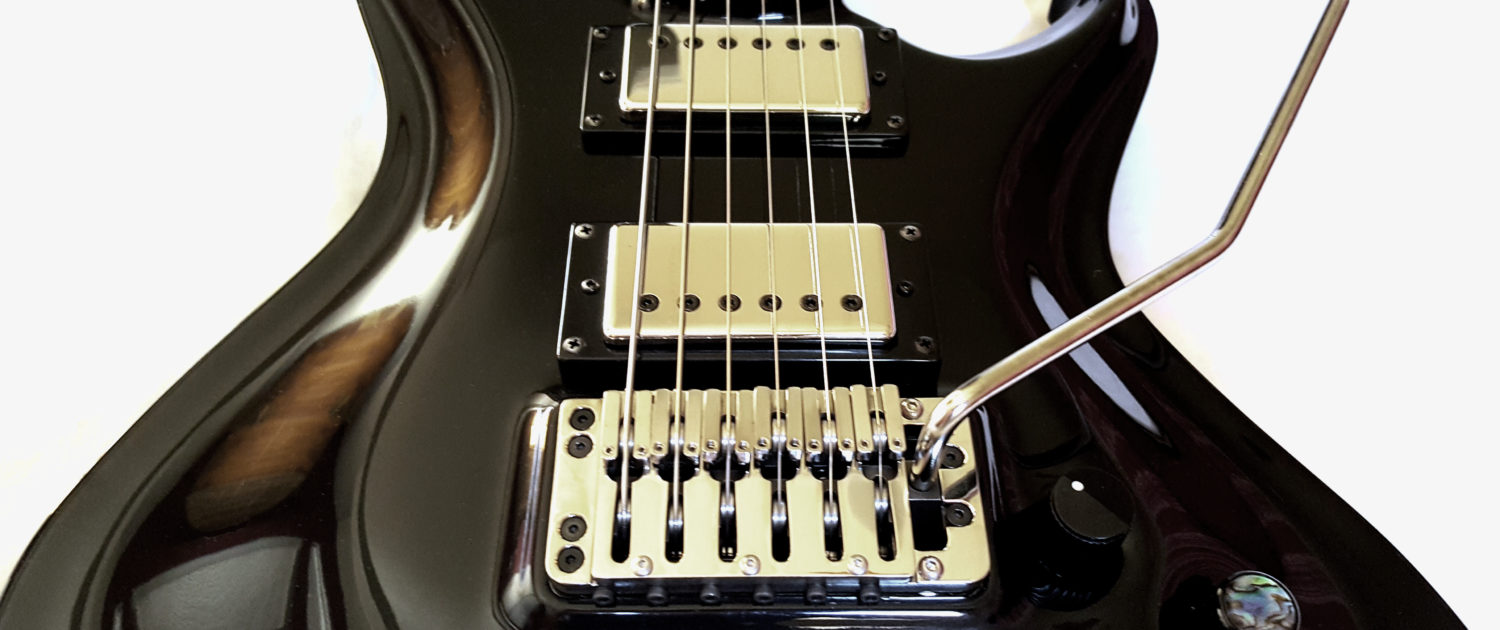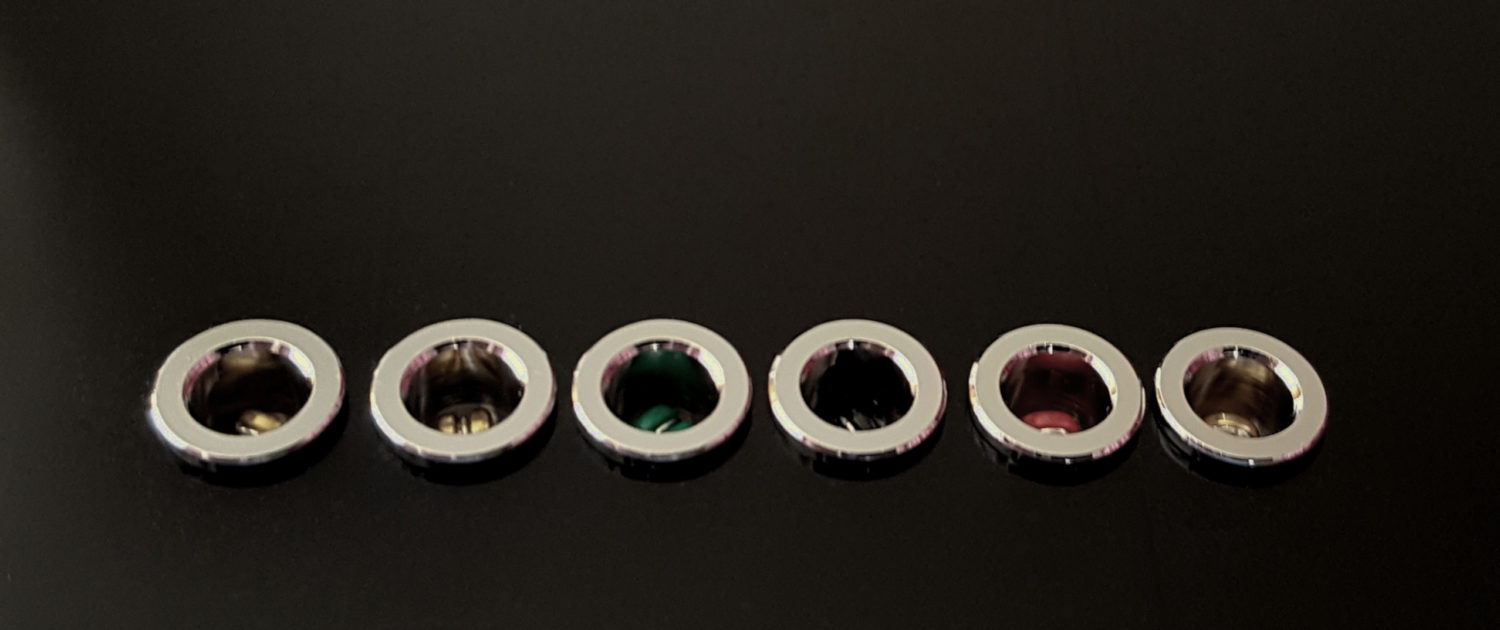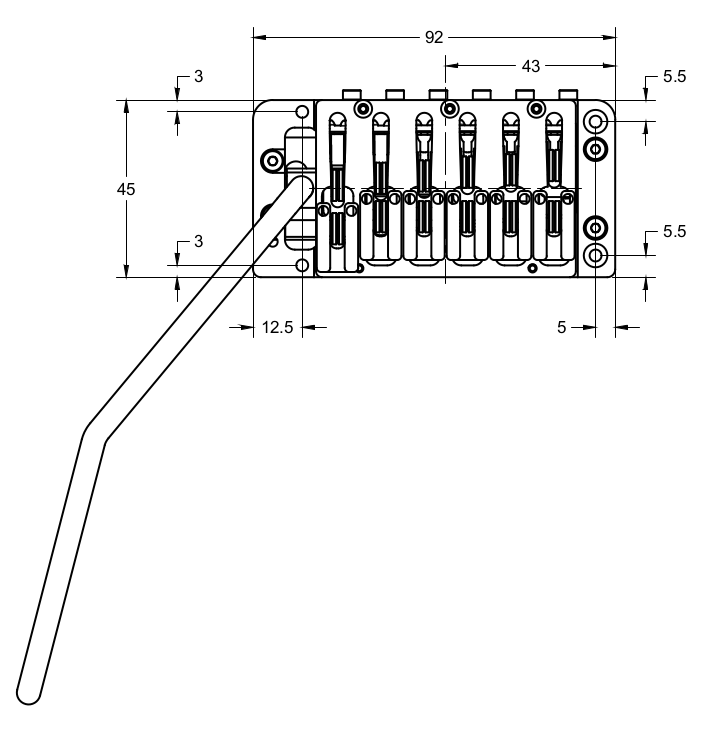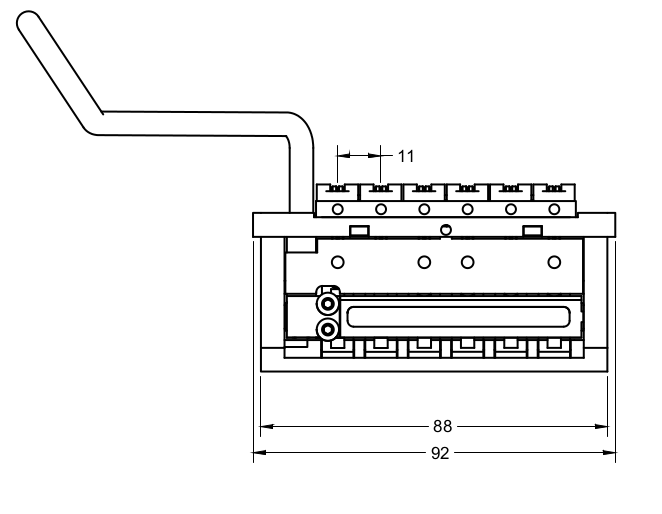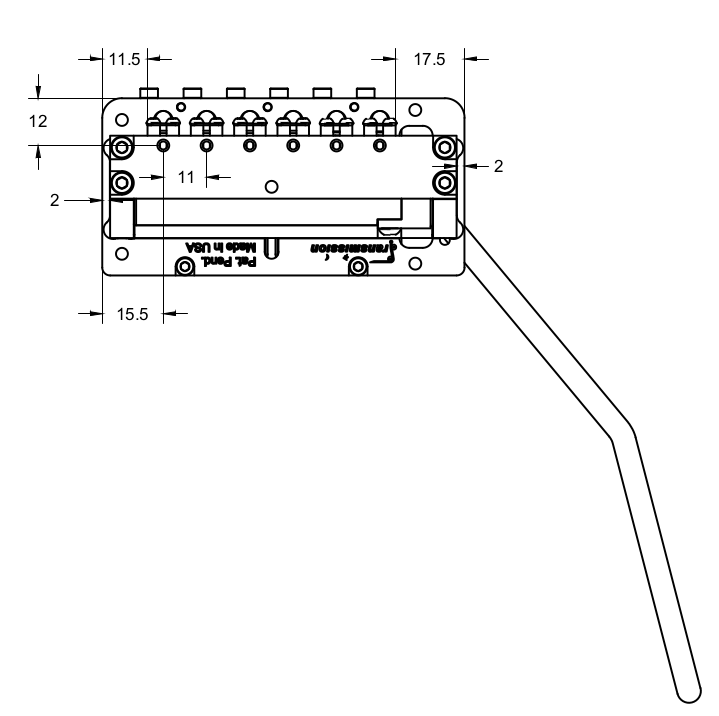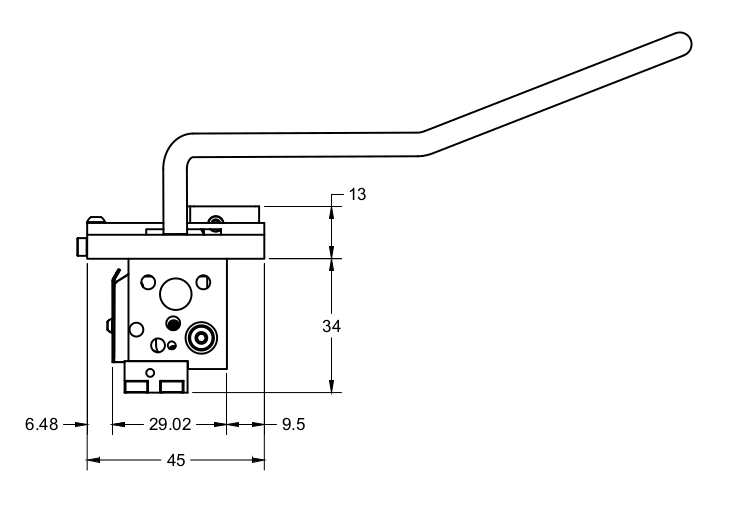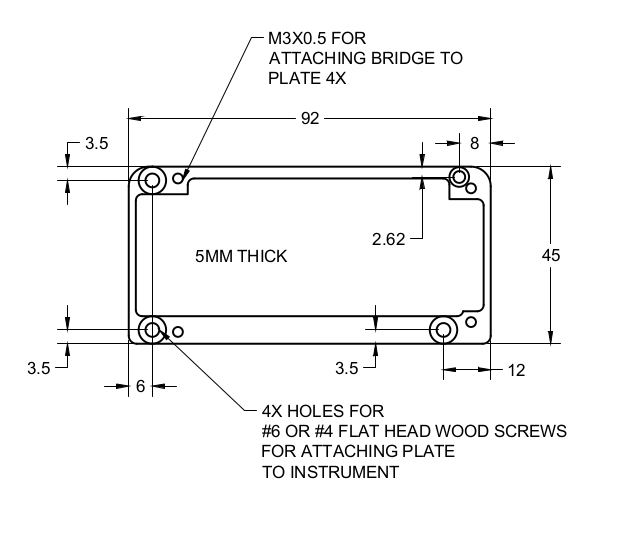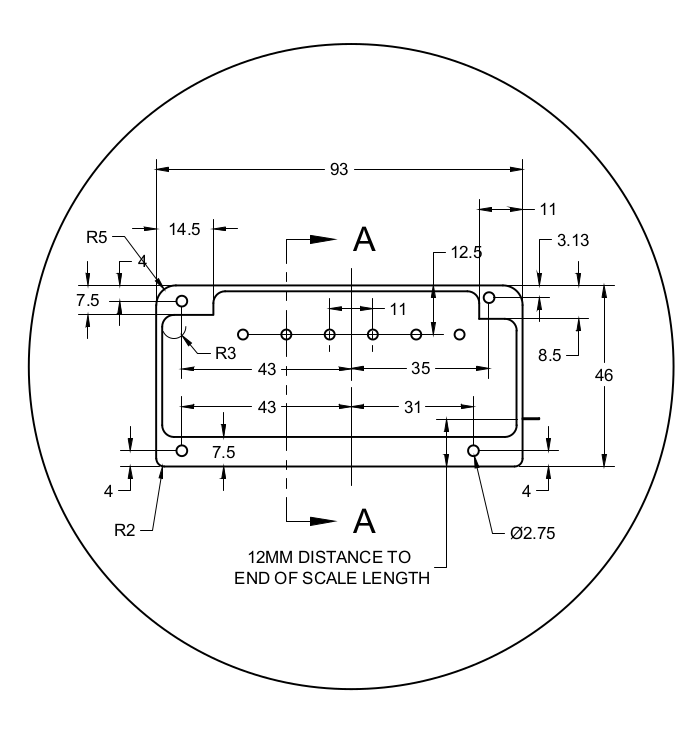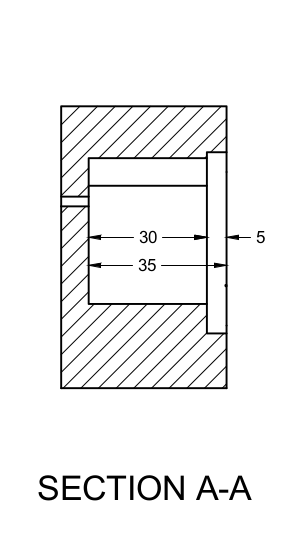- Material – Steel / Steel+Chome
- Weight ~18oz
- String spacing -11mm
- Saddle Roller – Stainless steel or Brass
- All Other Dimensions -See Drawings
TRANSMISSION GUITAR BRIDGE (mm)
MOUNTING PLATE (mm)
INSTRUMENT CAVITY DIMENSIONS (mm)
How can the TGB be configured? The TGB can be configured in the following ways:
- As a standard Tremolo system i.e. pressing the tremolo arm down causes the pitch of the strings to decrease and vice versa.
- As a reverse Tremolo system i.e. pressing the tremolo arm down causes the pitch of the strings to increase and vice versa.
- Spring elements can be removed so that specific strings are not affected when the tremolo arm is moved.
- The amount of pitch change can be adjusted for each string.
- The tremolo arm can be locked in a non-neutral position to facilitate instantaneous shifting into alternate tunings.
How easy is it to change the usage configuration? In order to change how the TGB is used (e.g. switching from standard tremolo use to reverse tremolo), requires the TGB to be unstrung and removed from the guitar. Once removed, it is simply a matter of adjusting one or two linkage pins and replacing. Once in place and restrung, adjust the pitch shift screws to achieve the desired result.
Does the TGB return to correct pitch? In each TGB, there are 20 precision ball bearings that eliminate any friction between the bridge elements and the string, allowing the string to perfectly return to correct pitch.
Does the TGB require a locking nut? In our opinion, no. A basic understanding of linear mechanical strain reveals that the length of string change over the nut during tremolo activities is incredibly small compared to the change at the bridge end and is of no significant consequence. If anything, a lubricated nut may be beneficial.
What string gauges can be used with the TGB? Any typical string gauges may be used on the TGB with the exception of the high E string. The high E string should be 0.010” diameter or greater for better fatigue life. Great measures have been taken to increase the bend radii of the string to prevent premature string fatigue failure. However, 0.009” or smaller diameter E strings will eventually fail quicker than 0.010” or larger diameter strings. Additionally, larger diameter strings will respond better to changes in tension i.e. more pitch change/per tremolo arm movement.
Is the TGB available for sale? Yes, devices can be ordered from the Shop page. Currently, devices are produced in a very small shop in Flagstaff, AZ. All parts are machined, de-burred polished, and electroplated on the premises. As devices are available, they are put into inventory.
Can I drop a Transmission in my guitar? Probably not, but maybe. The TGB is a break in design from a floating style tremolo and requires a specific cavity in the body to accommodate it. It will definitely not fit in a guitar that has previously had a typical tremolo system that uses extension springs. The holes for string retention must also be properly aligned. See the specifications and drawings to determine if the TGB will fit in your guitar.
Who should buy one? The TGB requires extensive modifications to a current guitar (if it’s even possible), or a newly built guitar. Because of this, only people who are skilled at the art of lutherie should install one. The ideal customer is a custom guitar builder or manufacturer that would like to offer their customers something new for the 21st century.
Future Plans? A utility patent was filed in 2015 for the TGB and another in 2016 for the truss rod system. Patent US 9,812,099 B1, NON-FLOATING TREMOLO was approved Nov. 7, 2017 and patent US 9,805,698 B1, TRUSS ROD TENSIONING MECHANISM, was approved Oct. 31, 2017 . The goal is to either manufacture for, and/or partner with instrument manufacturers.

